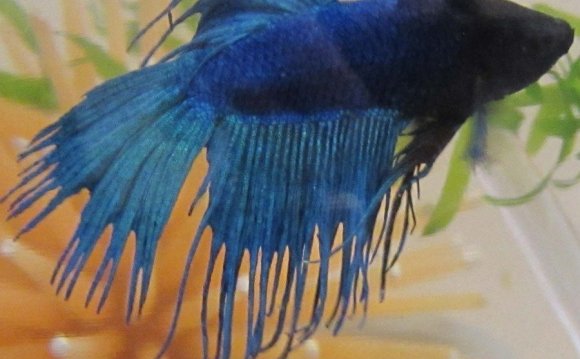

Steps
Part
- Take the affected fish out of the tank. Start by removing the affected fish from the tank and placing him in a separate tank with clean, fresh unchlorinated water.
- You will also need to remove the other fish in the tank to a separate container with clean, fresh unchlorinated water. Use a different net to remove the other fish as fish rot can be spread through shared nets. Do not place the affected fish in the same container as the other fish as this can cause the fin rot to spread.
- Wash the tank and all the tank accessories. You will then need to drain the tank of all the water in the sink. Take out all the tank accessories as well as the gravel in the tank.
- Give the tank a good wash with hot water. Do not use soap when you clean the tank.
 Use paper towels to get into the crevices of the tank and make sure it has been cleaned thoroughly.
Use paper towels to get into the crevices of the tank and make sure it has been cleaned thoroughly. - Soak the tank accessories in hot water for five to ten minutes. If you have live plants, soak them in lukewarm water. You can then take them out of the water and let them air dry.
- Wash the gravel with warm water and hoover it with a small vacuum to get rid of any dirt or debris.
- Give the tank a good wash with hot water. Do not use soap when you clean the tank.
- Do a 100% water change. Once you have washed the tank thoroughly and let it air dry, you can place the gravel and the tank accessories back into the tank. If your tank is uncycled, do a 100% water change using dechlorinated or conditioned water.
 Make sure the water is at 80-82 degrees F (26-27 degrees C).
Make sure the water is at 80-82 degrees F (26-27 degrees C).
- If your tank is cycled, meaning there is a water filter and an air pump, you can do a 50% water change.
- If your tank has a water filter, you should take a bucket of the fresh tank water and wash the filter with the water. Once the filter is cleaned of any gunk or dirt, you can place it in the tank. Do not use tap water to clean the filter as this can contaminate the filter.
- Check the pH of the tank water. Before you put your fish back in the tank, you should use a pH test kit to ensure the water quality is good. The pH should be around 7-8 and the ammonia, zero nitrites and nitrates should be no higher than 40 ppm.
- Once you have confirmed the water is suitable for your fish, you can slowly add the fish back into the tank, including the fish with fin rot. You may then add antibiotics or antifungal medication to the tank water to help kill the fin rot. The combination of a clean tank and medication should help your fish to get rid of the fin rot.




Source: www.wikihow.com









